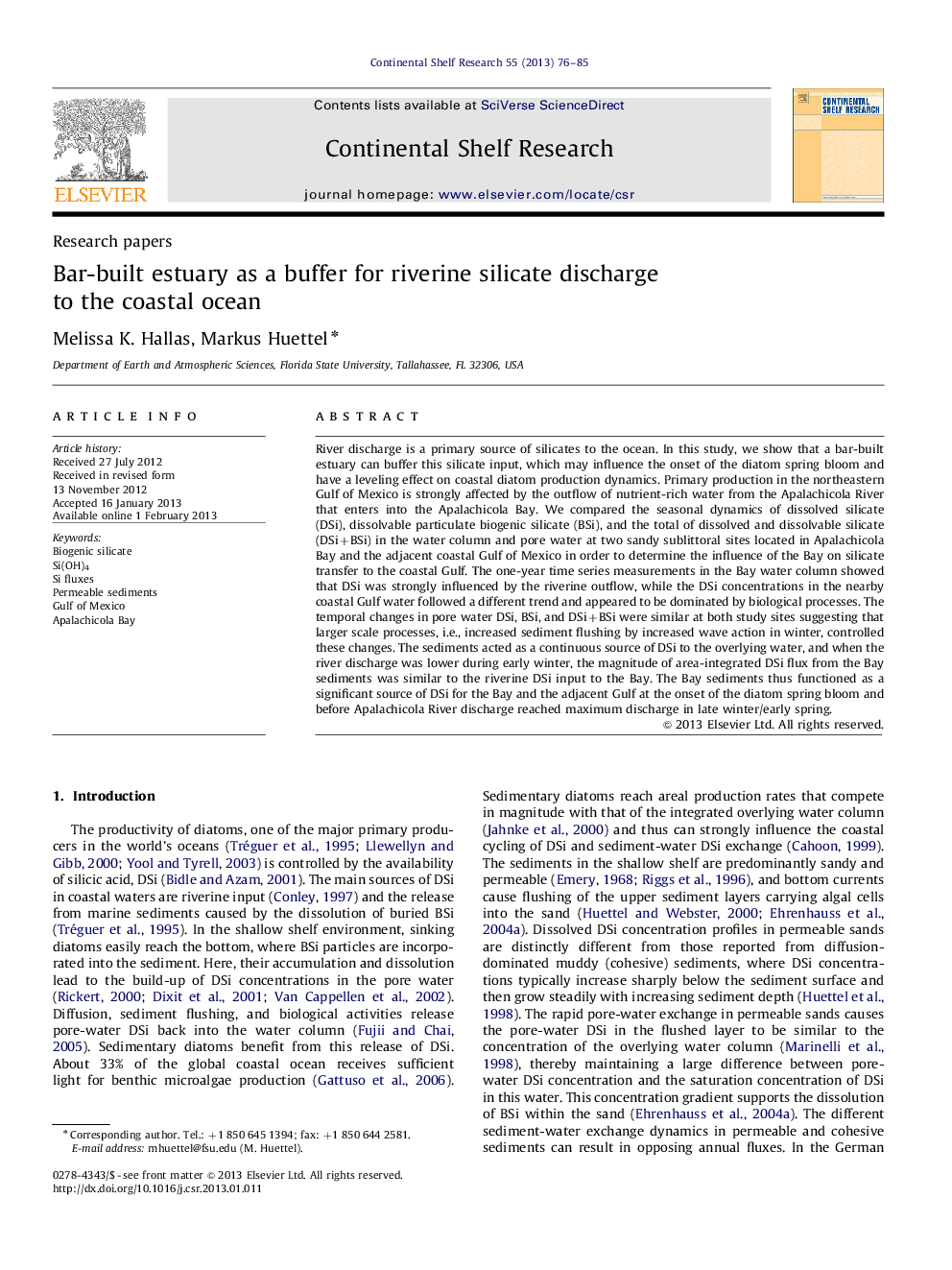| کد مقاله | کد نشریه | سال انتشار | مقاله انگلیسی | نسخه تمام متن |
|---|---|---|---|---|
| 4532196 | 1626156 | 2013 | 10 صفحه PDF | دانلود رایگان |

River discharge is a primary source of silicates to the ocean. In this study, we show that a bar-built estuary can buffer this silicate input, which may influence the onset of the diatom spring bloom and have a leveling effect on coastal diatom production dynamics. Primary production in the northeastern Gulf of Mexico is strongly affected by the outflow of nutrient-rich water from the Apalachicola River that enters into the Apalachicola Bay. We compared the seasonal dynamics of dissolved silicate (DSi), dissolvable particulate biogenic silicate (BSi), and the total of dissolved and dissolvable silicate (DSi+BSi) in the water column and pore water at two sandy sublittoral sites located in Apalachicola Bay and the adjacent coastal Gulf of Mexico in order to determine the influence of the Bay on silicate transfer to the coastal Gulf. The one-year time series measurements in the Bay water column showed that DSi was strongly influenced by the riverine outflow, while the DSi concentrations in the nearby coastal Gulf water followed a different trend and appeared to be dominated by biological processes. The temporal changes in pore water DSi, BSi, and DSi+BSi were similar at both study sites suggesting that larger scale processes, i.e., increased sediment flushing by increased wave action in winter, controlled these changes. The sediments acted as a continuous source of DSi to the overlying water, and when the river discharge was lower during early winter, the magnitude of area-integrated DSi flux from the Bay sediments was similar to the riverine DSi input to the Bay. The Bay sediments thus functioned as a significant source of DSi for the Bay and the adjacent Gulf at the onset of the diatom spring bloom and before Apalachicola River discharge reached maximum discharge in late winter/early spring.
► Sediments of bar-build estuary act as a buffer for DSi (Si(OH)4) discharged into the Gulf of Mexico.
► Sediments of Apalachicola Bay acted as a continuous source of DSi to the overlying water.
► During early winter, DSi flux from the sediments rivaled riverine DSi input to the Bay.
► DSi flux from the Bay sediments supported early start of the spring bloom.
► Temporal changes in pore water DSi, particulate BSi, and DSi+BSi suggest control at a larger scale.
Journal: Continental Shelf Research - Volume 55, 1 March 2013, Pages 76–85